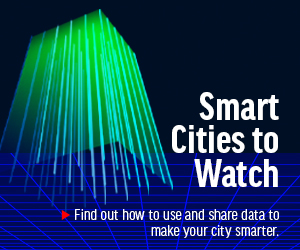Video Surveillance Becomes Smart Traffic Centerpiece
StateTech recently interviewed former Raleigh CIO Sindhu Menon, who left that role on April 1 to become CIO of Harris County, Texas. Menon describes how the city leverages technology in support of a modernized approach to transportation.
In search of Internet of Things tools and data solutions that would help to identify traffic patterns, the city’s IT and transportation departments reached out to partners in the public and private sectors to develop a pilot project.
“We wanted to use real-time data, machine learning and artificial intelligence to build a proof of concept that could identify vehicles and detect vehicle movement and patterns,” Menon says.
Raleigh has made a major investment in Pelco video surveillance systems, particularly the Pelco Spectra Enhanced Series IP PTZ. The city has more than 100 cameras deployed at traffic intersections, making it possible to view activity in real time. A transit project is scaling up camera use, leveraging AI to shift from manual viewing to automated-intelligence solutions.
“Live video feeds from these cameras are fed into pretrained computer vision models to detect vehicles as metadata and are made available to other city systems to assist in making informed traffic management decisions,” Menon says.
RELATED: Cities can now measure how “smart” they actually are.
Sharing Traffic Data Breaks Down Silos
This sharing of traffic data across city departments typifies Raleigh’s smart city strategy. IT leaders here have focused on breaking down silos in support of their smart city proof-of-concept efforts.
When the traffic pilot project sought to leverage data from the camera network, for example, “the team realized that the valuable camera data was limited to certain people and locations. The data’s value was siloed,” Menon says.
To break that data free, the team integrated key data sources into the city’s geospatial information systems platform, enabling a dashboard map view that cut across previously fragmented data stores. For nongeographic data, the city uses the Microsoft Power BI platform to build dashboards and construct visuals for sharing information and detecting trends.
A COVID-19 screening pilot, for example, led the IT team to realize that incorporating a unique employee ID within the city’s badge and access data schema could make that data available for other purposes. As a result, the city is “taking steps to start including the ID on new badges and match the data to populate IDs for existing staff,” Menon says.
This focus on data availability has also surfaced in the city’s partnership efforts. North Carolina State University has notably teamed with the city’s IT department on mapping projects and mobility initiatives. North Carolina State University CIO Marc Hoit praises city IT leaders for their efforts to make data more readily shareable.
“If you go look on their website, you can download the data sets,” Hoit says. “That allows university researchers or students to do projects, to offer ideas or solutions. You have many eyes looking at it, which is a nice use of data.”












